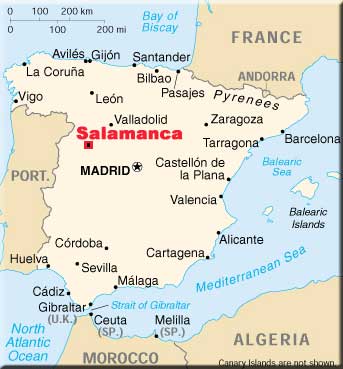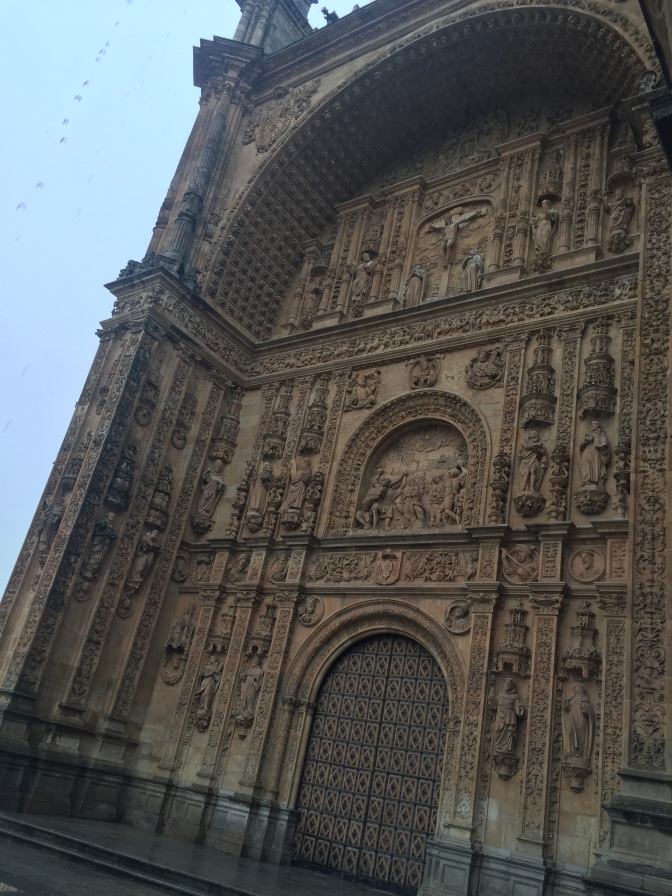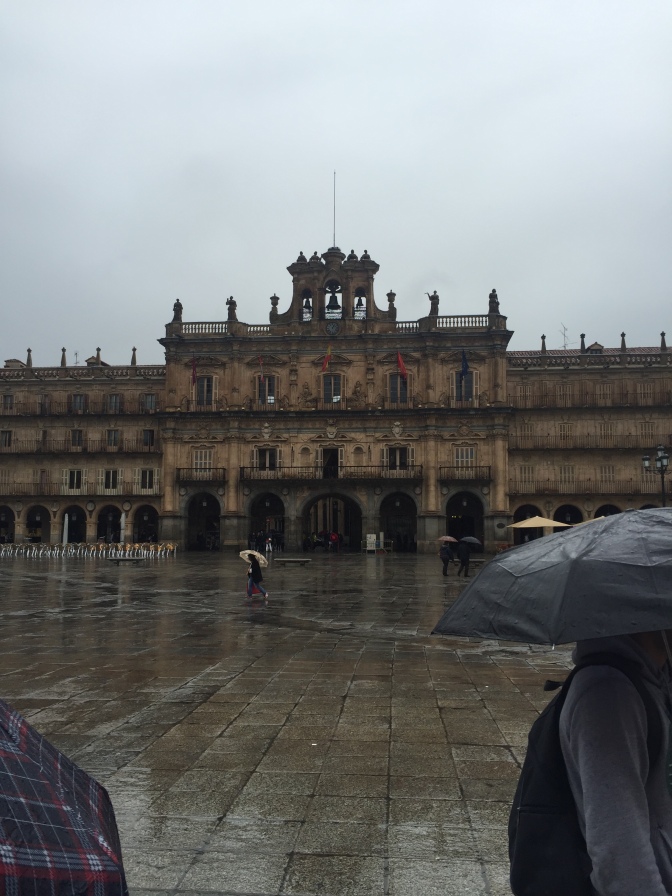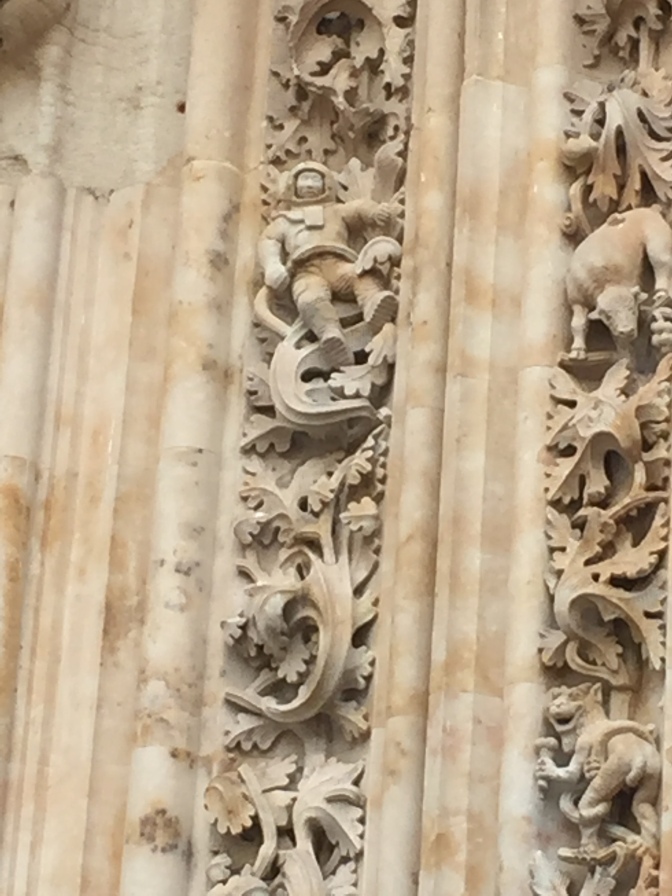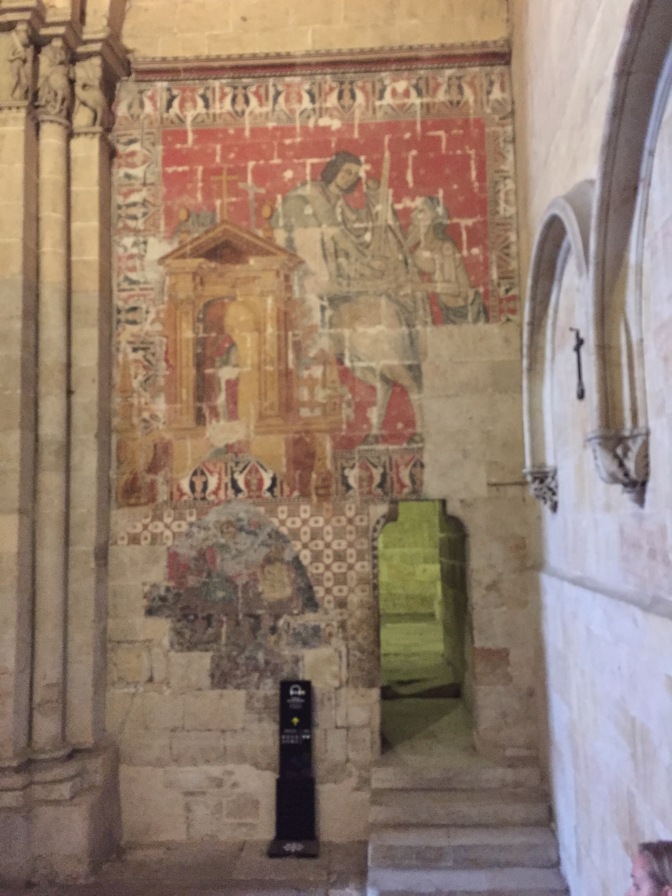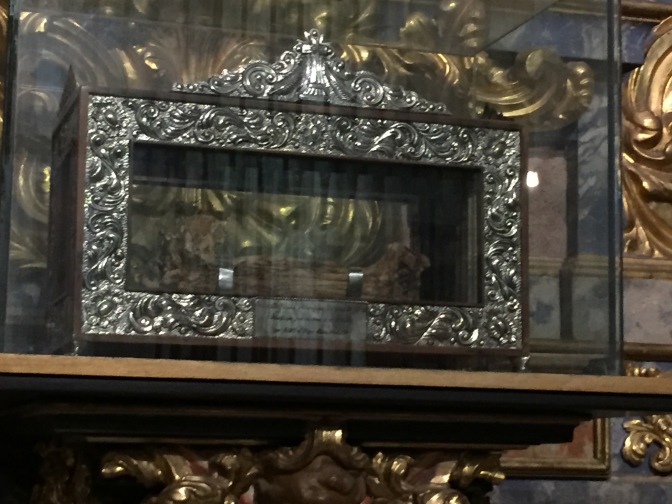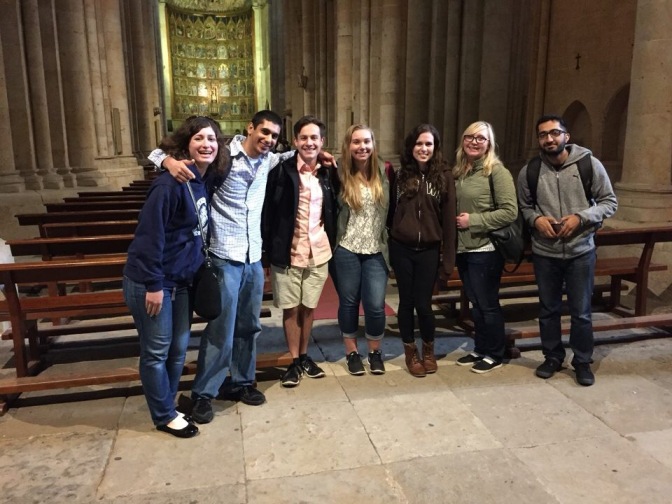Photos and Words by Kristina Aiad-Toss
During our month spent in Spain with the DISSTA program, we have made many memories and collected many unique experiences with each other. During this short four week program, we visited nine incredible cities throughout the country and lived in one. Traveling to each place, added to our time abroad, as we formed lasting friendships, tried new things, interacted with different people, and were touched in unique ways.

Salamanca
Upon arrival to Salamanca during our first week in the country, we were given a tour of a beautiful city. Although it rained throughout the day, many of us—forced to purchase umbrellas and sweatshirts—were enthralled with its rich history and captivated by its charm. From this experience and others, we learned to deal with challenges presented to us while being abroad. Even in the face of problems, we were able to focus on the positive aspects. Finally, we realized the value of all experiences—both bad and good—that give us valuable knowledge and cause us to look at life from different angles.

Peñafiel
On a Wednesday afternoon, we journeyed to this city—a living reminder of the middle ages. Immersed in Spanish history, we walked the old streets and explored an ancient castle, climbing to the very top to witness the Spanish countryside. Atop the towers, we were humbled by the beauty of the country we were living in.

Segovia
Greeted by the ancient aqueduct, we scrambled off the bus and made our way to a city crowded with street musicians, artisans, and performers. From the cathedral to Plaza Mayor, the architecture of the city was ornate and mind-bogglingly beautiful. We witnessed awe-inspiring landscapes hiking through buildings in search of the greatest view. Amidst the art and beauty, we learned to develop a greater appreciation for Spanish culture and history. We learned to experience things more deeply with a consideration for different perspectives and attempting to be fully present in the moment.

Burgos
Yet another one of our speedy excursions in the middle of the week, this city’s beauty and historical allure captured our interest. Upon entering the cathedral, all we could do was simply look up at the incomprehensible beauty that stood before us. In Burgos, we learned to acknowledge every detail as important—both when visiting historical locations and in our everyday lives. Just as every detail of the scenes of the cathedral is carved carefully with purpose, the small experiences we have each day are meaningful.

Santander
Visiting the beach for the first time in Spain, we were able to fully experience their natural beauty as we felt the sand beneath our toes. We spent our days in this city making memories together by visiting attractions, relaxing on the beach, and celebrating during the evenings. During this excursion, the UA group booked a hostel and bus ticket back independently. While we gained experience planning our own trips, we also formed lasting bonds by the experiences we had together.

Avila
A sight resembling a scene from Game of Thrones, our cold day spent in Avila gave us a sneak peak into medieval history as we raced through the city to complete the scavenger hunt project. While trekking the wall of this magnificent city, we also let ours down as we learned to work together as a team to accomplish our goals.

San Sebastian
In this city, we were able to experience a new language and culture of Spain in the region of Pais Vasco. We spent our days enjoying the beauty of the beach, the rustic architecture of the city, learning about the culture and history of the people, and forming bonds with one another. Here, we realized the true meaning of travel—becoming closer with those you travel with, whether it is someone you meet for a week at a hostel or a fellow student you have been traveling with for a month. The connections you make with people while traveling are priceless.

Toledo
Amidst the ancient buildings and haphazard sword shops, we walked through the winding streets of Toledo experiencing the rich history of the ancient city—entering monasteries, churches, a synagogue, stores, and restaurants. While we looked at all the old places around us, we imagined what life was like back then and felt inspired to be standing in a place with so many stories.

Madrid
A final conclusion to a month in Spain—the hustle and bustle of the big city served as a backdrop to our last celebrations together in the country. In this place, we experienced amazing things like the Prado Art Museum, the Botanical Gardens, Plaza Mayor, The Glass Castle, a flamenco show, a group dinner. Ending our journey in a big city, brought all of our experiences full circle. We realized we were able to open our eyes, transform our perspectives and, most of all, grow from our experiences.

Valladolid
Finally, the most important place along our journey was Valladolid, the town we called “home” for our month abroad. While attending school and living in the city, here we learned and grew—strengthening our skills in Spanish and revolutionizing our view of the world. As we walked down these streets each day, we changed ourselves through new experiences. We spent each day with people who touched our lives in unique ways—host families, teachers, other students, conversation partners, and others. These are the individuals who made connections with us, taught us valuable lessons, and inspired us. Overall, studying abroad in Spain has not only improved our language skills, but has also widened our perspectives, allowed us to see the world in different ways, and shaped us into worldly individuals. Traveling has made us realize how similar we all are despite our differences.
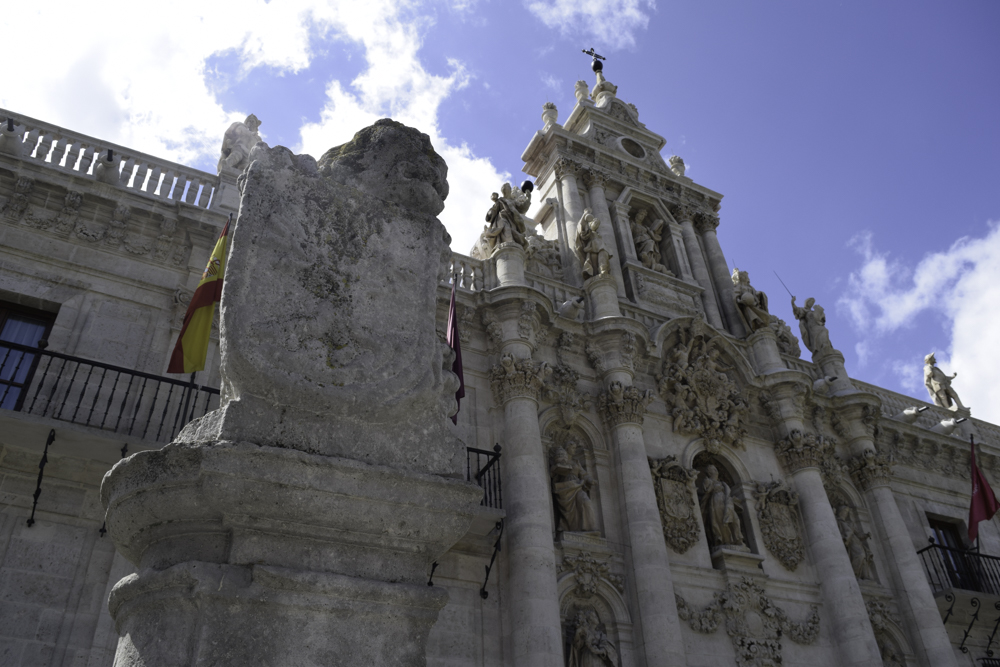


 My name is Miranda Toman and I am going into my senior year as a psychology student at the University of Akron. Spain has been an absolutely incredible experience that I will never forget. One of my favorite excursions we took in Spain was Segovia. The town was very old but beautiful. Luckily the rain held off until the very end of the trip and the weather was absolutely beautiful. There was also a lot of people playing music in streets which made it very pleasant to walk through the streets.
My name is Miranda Toman and I am going into my senior year as a psychology student at the University of Akron. Spain has been an absolutely incredible experience that I will never forget. One of my favorite excursions we took in Spain was Segovia. The town was very old but beautiful. Luckily the rain held off until the very end of the trip and the weather was absolutely beautiful. There was also a lot of people playing music in streets which made it very pleasant to walk through the streets.
 One of the most incredible sites in Segovia was the roman aqueduct. Its absolutely huge and lines the entire front of the city. The most interesting thing i found about this was that it wasn’t even built by the romans. A wealthy family that lived there wanted one built, so they did. If you go, I highly recommend climbing all the way to the top. It’s not that bad of a climb and its totally worth it. It’s an incredible view.
One of the most incredible sites in Segovia was the roman aqueduct. Its absolutely huge and lines the entire front of the city. The most interesting thing i found about this was that it wasn’t even built by the romans. A wealthy family that lived there wanted one built, so they did. If you go, I highly recommend climbing all the way to the top. It’s not that bad of a climb and its totally worth it. It’s an incredible view.




















